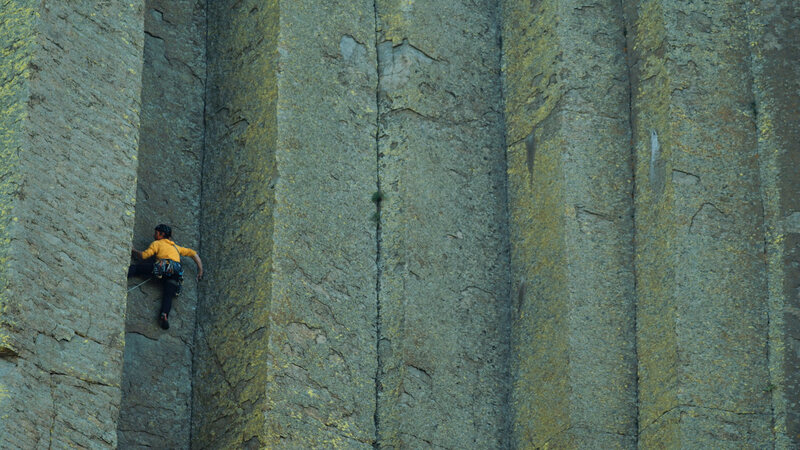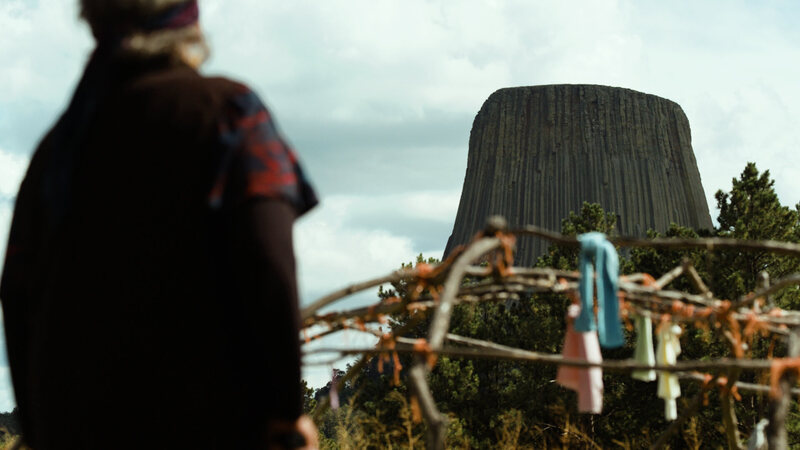This is a transcript of an episode of Untold Earth, a series from Atlas Obscura in partnership with Nature and PBS Digital Studios, which explores the seeming impossibilities behind our planet’s strangest, most unique natural wonders. From fragile, untouched ecosystems to familiar but unexplained occurrences in our own backyards, Untold Earth chases insight into natural phenomena through the voices of those who know them best.
Pansy Hawk Wing: The original great mystery is called Daku Shka Shka. The living energy that exists on all things. Stones, earth, plants, stars, everything has Daku Shka Shka.
Narrator: Devil’s Tower, also known as Matotipila or Bear’s Lodge, was formed over 50 million years ago. Rising dramatically from the Wyoming Plains, this spellbinding monolith is a pillar of Lakota Sioux mythology and an enduring challenge to rock climbers worldwide.
But through thousands of years of human fascination, one critical question remains unanswered. How did it get here?
Tyler Devine: It is the first national monument in the United States of America. It was established in 1906, thanks to Theodore Roosevelt, utilizing this thing called the Antiquities Act. This rock is 867 feet tall above the visitor center. It’s about a football field in size on the top of the tower itself.
Robert Livingston: First of all, people thought it was a volcano. That didn’t really hold any water because around this area there’s no pyroclastics, there’s no tephra, lava, volcanic rock, or anything like that.
What we think it is now is what’s called a laccolith. The magma that came from deep within pushed up. And as it pushed up, it took the sedimentary rock, which is ductile or bendable, and it pushed it up into a dome. As it did that, the magma started to cool very, very, very slowly.
Tyler: It crystallized in this very specific way to make this columnar jointing that we see today. Millions of years later, the sedimentary rock got washed down the Belfouche, and we’re left with Devil’s Tower with its massive, massive columns.
Cade Herrera: There are so many things that have taken place here in our oral histories and our traditions, but the origin story of Mato Tipila is the one of the bears. There were seven girls playing, and they went a little bit too far into the forest.
Pansy: It was just a hill there. And that’s when they heard the bear. They knew it was too far to run back to the village, so they climbed up on that mound.
Cade: They asked the great mystery, Wakan Tanka, can you help us? Why is this happening?
Pansy: And as they were praying, then out of the ground came this structure.
Cade: And they on top of it and the bears super upset.
Pansy: By then there’s more than one bear. They come running and they would grab the top and they would slide down, thus putting the marks on the butte.
Cade: These rocks started falling on them, and the bears one by one started getting pummeled. So under us right now in this talus field should be the remains of giant bears.

Pansy: This is preparing a smudging. We take sage or cedar and use it to start a small fire. We take the smoke. And this purifies our mind, body, and spirit. Smudging is something we do as a prayer, an acknowledgement of the great mystery in our lives on a daily basis.
People come here for vision quests. People come here just to hang prayer ties. People come here just to pray and touch any part of it. It’s almost like going to Sistine Chapel and going in there knowing you are in a sacred place to go in there and pray.
And you know that when you leave there you’ve got some healing passed on to you. That’s the sacredness that we hold Mato Tipila.
Cade: I grew up going to different sacred Lakota sites, but I actually never came here until I knew I was going to climb it. It was like seeing a skyscraper for the first time.
I felt like somebody who had never been to New York before and just looking up at all of the building. You just see this huge obelisk of stone, and me knowing I’m gonna climb it for a living, I just looked up at it and like there’s no way. It’s massive.
Tyler: Rock climbers find this place a world-renowned site for climbing. We have anywhere from three to five thousand people that climb it every single year. The Lakota people call this place Bear Lodge. Mato Tipila. Of course, this name Devil’s Tower is disrespectful to these indigenous names, to the original names of this site.
So, I mean, there’s always controversy when we talk about the name of Devil’s Tower and how the name came to be of Devil’s Tower versus Bear Lodge. And we want to have co-stewardship of this site. It is a very important part of management as we move forward.

Cade: The NPS have historically removed natives from land to preserve it in a sense. And that’s how I assumed that the NPS was going to be when I came on to work at Devil’s Tower. But seeing how the NPS and the tribes work together and the strides that we’ve made towards co-stewardship is really, really heartening.
Tyler: So hopefully, in the years to come, we’re going to continue to build this relationship and be able to provide a site that these people can come and find that connection that they’ve had for thousands of years and support that.
Cade: It’s one thing to see Devils Tower through a phone or through a computer screen. It’s another thing to see the wildlife and see the magnitude of the tower, to smell the ponderosa and the sweet clover and the sagebrush, to walk around the tower. When you’re here, you’re experiencing history, and the tower is history.
Pansy: The best way I can describe is it’s coming home. We came home. Spiritually, we came home.

